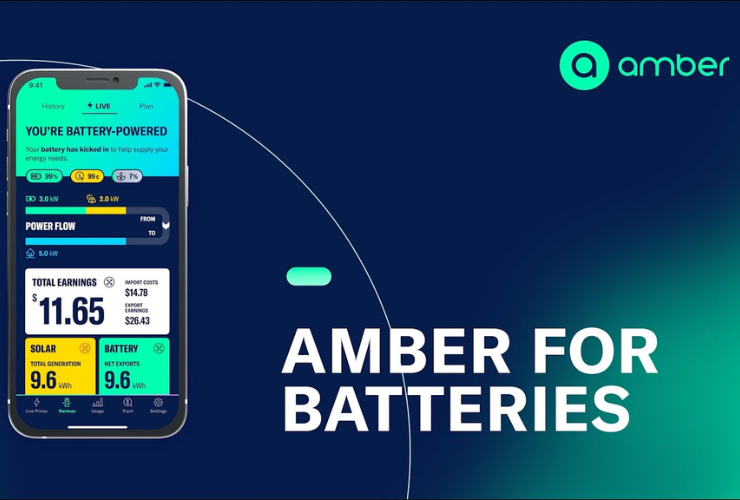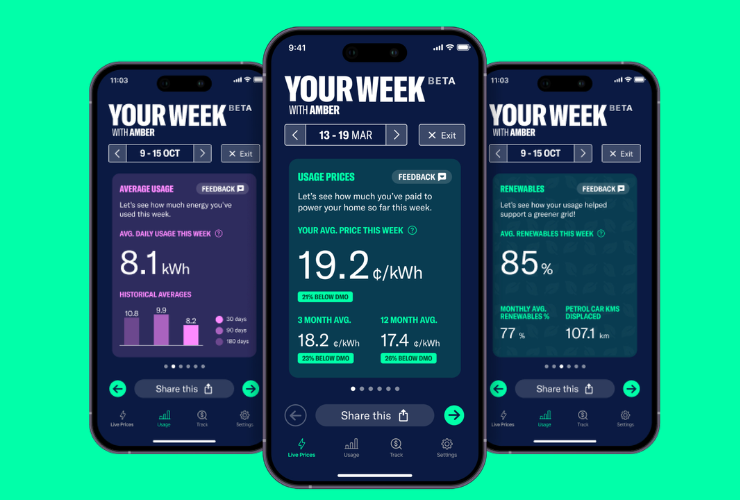Fast read
Yes, you can get paid for exporting excess battery power to the Australian grid, but it's rarely as simple as a standard solar feed-in tariff. The main way to earn money is by joining a Virtual Power Plant (VPP), which pays you for allowing them to use your stored energy to support the grid during peak demand. While this can improve your return on investment, the most significant financial benefit of a battery is still maximising the use of your own solar power to avoid buying expensive electricity from the grid.
Can I export excess battery power to the grid and get paid for it?
It’s a common and logical question for anyone investing in a home battery: Can this expensive asset do more than just store my solar power? Can it actually earn me money?
The answer is yes, but understanding how is key to setting realistic expectations. While the old model of simply exporting solar for a set feed-in tariff is fading, new opportunities are emerging that allow your battery to become an active participant in the energy market. This is primarily achieved by joining what’s known as a Virtual Power Plant, or VPP.
How does exporting battery power work?
The core idea is simple: store energy when it’s cheap (either from your solar panels during the day or from the grid overnight on a time-of-use tariff) and sell it back when grid prices are high. However, it’s important to distinguish between a standard solar feed-in tariff (FiT) and the revenue you can earn from a battery.
Most standard FiTs in Australia apply only to surplus electricity exported from your solar panels as it is being generated. Exporting power from your battery at a later time is a different mechanism. Doing this requires a smart, grid-interactive system, typically built around a modern hybrid inverter that can intelligently manage the flow of power between your panels, battery, home, and the grid.
The primary way to get paid: Virtual Power Plants (VPPs)
For most Australian homeowners, the only practical way to get paid for exporting battery power is by joining a VPP. Think of a VPP as a community of solar batteries, all connected via the cloud. An energy retailer or technology company remotely coordinates these batteries, drawing small amounts of power from each one simultaneously to create a large, combined energy source.
This collective power is then used to help stabilise the grid during moments of high demand, such as on a hot summer evening when millions of air conditioners switch on. Instead of firing up expensive and polluting gas power plants, the grid operator can pay the VPP for this clean, instant support. A portion of that payment is then passed on to you, the battery owner.
Several major energy retailers and technology companies operate VPPs in Australia, including AGL, Tesla, Origin, Amber, and ShineHub.
What are the financial benefits, and what can I realistically earn?
The financial incentives for joining a VPP vary significantly between providers but typically fall into a few categories:
- Premium feed-in tariffs: Some VPPs offer a higher rate for the energy they discharge from your battery compared to standard solar export rates.
- Bill credits: You might receive a fixed credit on your monthly or quarterly bill for participating.
- Wholesale market exposure: Some providers, like Amber, give you access to wholesale energy prices, allowing your system to automatically export when prices spike, sometimes to very high levels.
- Upfront discounts: In some cases, joining a VPP may come with a discount on the initial purchase price of the battery system itself.
Realistically, earnings can range from a few hundred to potentially over $500 a year, depending on your battery size, location, and the specific VPP program. In some states, there are also government incentives for joining a VPP, which can be combined with other rebates. For example, the NSW Government offers an upfront payment for connecting a battery to a VPP, which can be stacked with the federal Cheaper Home Batteries Program launching in July 2025.
Is exporting battery power always the best financial strategy?
This is the most critical question, and the answer is almost always no. The primary and most valuable job of your home battery is to help you use your own solar energy—a practice called “self-consumption”.
Consider this simple scenario:
- The price to buy electricity from the grid during the evening peak is 50 cents per kilowatt-hour (kWh).
- A VPP offers you 25 cents per kWh to export your stored energy during that same peak.
By using your stored solar energy to power your home, you save 50 cents for every kWh. By exporting it, you only earn 25 cents. In this case, self-consumption is twice as valuable.
A well-managed VPP understands this. It will typically only export energy that is genuinely surplus to your needs, or it will discharge during very high price events that make exporting more valuable than self-consumption. Most programs also allow you to set a minimum reserve level in your battery, ensuring you always have enough power for your own use or for a blackout.
What are the requirements and potential drawbacks?
Before signing up, it’s important to be aware of the practicalities and potential downsides.
- System Compatibility: Your battery and inverter must be compatible with the VPP operator’s software. Many modern systems, like those from Sungrow or Sigenergy, are designed to be “VPP-ready” and integrate easily with various platforms.
- A Reliable Internet Connection: The VPP needs a constant connection to your system to manage it effectively.
- Giving Up Some Control: You are allowing a third party to control when your battery charges and discharges. While you can usually set basic rules, the day-to-day operation is automated by the VPP operator.
- Increased Battery Wear: Exporting to the grid adds extra cycles to your battery, which contributes to its gradual degradation over time. VPP operators argue that the financial benefits outweigh this additional wear, but it’s an important factor to consider.
Key questions to ask a VPP provider
To ensure a VPP is right for you, always read the fine print and ask detailed questions before committing:
- What is the exact payment structure, and what are the realistic annual earnings for a system like mine?
- How much control will I retain over my battery, and can I set a minimum backup reserve?
- What are the contract terms, length, and are there any exit fees?
- How does joining the VPP affect my standard solar feed-in tariff?
- Will my battery’s warranty be affected by the additional usage?
The final word
Yes, you can absolutely get paid to export your battery power to the grid, and with falling feed-in tariffs and new government incentives, it’s an increasingly popular way to improve the financial return on a battery. However, it’s crucial to see VPP participation as a secondary benefit. The number one role of your battery is to slash your power bills by storing your free solar energy for when you need it most.
Thinking of a VPP as a clever optimisation—a way to earn a little extra from your investment—is the right mindset. If you are considering a battery, discussing VPP options with an accredited installer is a vital step. They can advise on compatible systems, like those from leading brands Sigenergy or Sungrow, and help you analyse whether it’s the right move for your energy goals.
To get clear, personalised advice and connect with vetted local experts who can guide you through these decisions, the team at Your Energy Answers is here to help.





